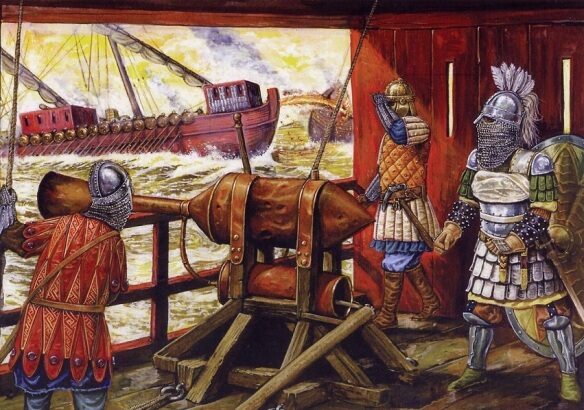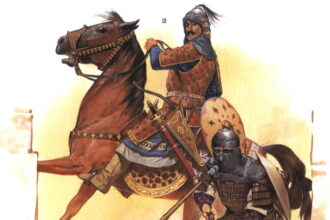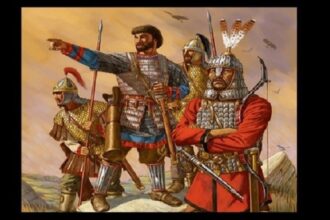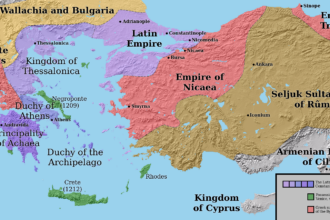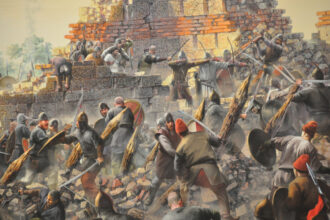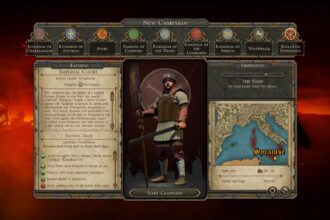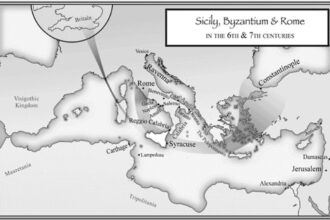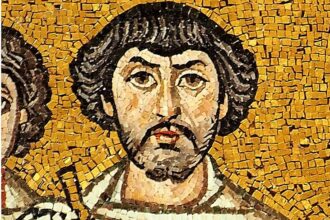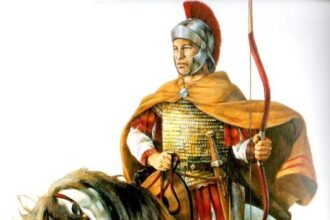Newsletter
Get the latest from Weapons and Warfare right to your inbox.
Follow Us
Explore
Byzantine
Naval Power of High Byzantium
Greek Fire launcher, mounted below the forecastle, in operation against Arab fleet during Second Siege of Constantinople, 717. ‘Navigantium fortitudo mihi soli inest’, is a remark made by Nicephorus II (as reported by Liutprand). Nicephorus could make this boast in truth, since the emperors of High Byzantium succeeded gradually in building up a fleet of such power as to…
Most Recent
The Fate of the Latin Empire, 1206–61
The Latin Empire, Empire of Nicaea, Empire of Trebizond, and the Despotate of Epirus-the borders are very uncertain. On 15 August 1261 – fifty-seven years after the Fourth Crusade had sacked the Queen of Cities – Michael Palaeologus, the ruler of Nicaea, processed into the Hagia Sophia where he was…
Leo III the Isaurian (ca. 680–741)
Byzantine emperor. Leo III, whose original name was Konon, is popularly known as Leo the Isaurian. He was born possibly in 680 in Germanikeia, a city in the ancient country of Commagene in the Roman province of Syria (present-day Maras in southeastern Turkey). It is not clear when, but he…
Sicily between Constantinople and Rome I
Theme of Sicily Gregory then set sail from the city of Constantinople, and he reached the city of Rome on the twenty first day of the month of June, and there he worshipped the tombs of the holy and most praiseworthy Apostles, and visited every holy place in the city.……
Sicily between Constantinople and Rome II
Although the presence of the imperial administration and court in Sicily was brief, Constantinople continued to send officials, messengers, and administrators to Sicily on a regular basis. Many official visits to Sicily from Constantinople were occasioned by violent incidents and rebellions on the island, much like the one following Constans…
Belisarius: A General for all Seasons, Budgets; all Enemies, domestic and foreign. Part I
Belisarius may be this bearded figure on the right of Emperor Justinian I in the mosaic in the Church of San Vitale, Ravenna, which celebrates the reconquest of Italy by the Roman army. Late Roman/early Byzantine bucellarius. Belisarius’ household troopers would likely have looked much like this figure. Map of…
Belisarius: A General for all Seasons, Budgets; all Enemies, domestic and foreign. Part II
The armor and tunics of the bucellarii would have varied wildly after years on campaign and scavenging armor wherever possible; as men replaced broken pieces with armor captured or purchased locally. But his figure represents what Belisarius’ household bucellarii might have looked like in their early years, armed in typical…
Most Popular
The Military of the Byzantines
Dominant military forces of the Middle East between the fourth and fifteenth centuries. At Manzikert…
The Sixth-Century Army of Justinian
The sixth-century army of Justinian’s era, like its earlier counterparts, was an entirely professional force,…
Roman to Byzantine Army Transition Part I
In 330 ce, Constantine I, Emperor of the Romans, founded a new capital for his…
Father and Son Save Byzantium in the 8th Century
Avar and Bulgar warriors, eastern Europe, 8th century AD. Leo III (717–741) Leo III, like…
